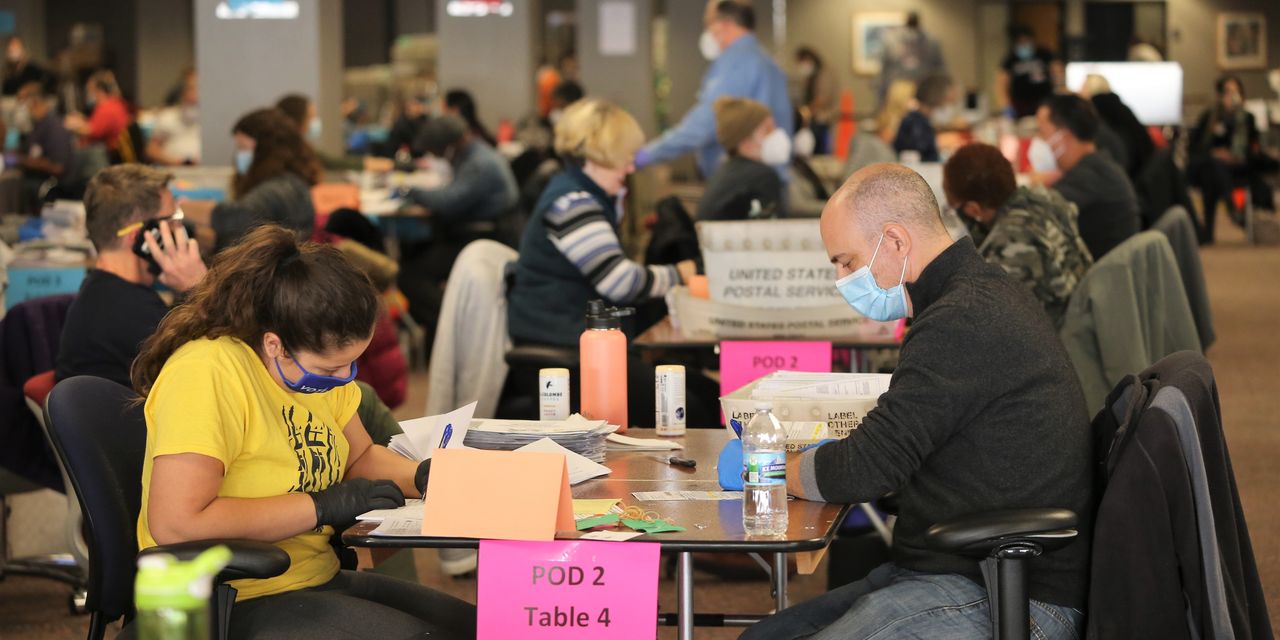The Best Summary of the 2020 Election

At his first big political rally of 2022, President Trump was again focused on 2020. “We had a rigged election, and the proof is all over the place,” he said. Mr. Trump was apparently too busy over Christmas to read a 136-page report by a conservative group in Wisconsin, whose review shows “no evidence of widespread voter fraud.”
If curious Republicans want to know what really happened in 2020, this is the best summation to date. Released Dec. 7, it was written by the Wisconsin Institute for Law and Liberty (WILL), a policy shop with conservative bona fides that supported many of Mr. Trump’s policies. A Wisconsin judge this month said ballot dropboxes are illegal under state law, in a challenge brought by WILL.
Its report on 2020 wallops state officials for bending election rules amid the pandemic. That mistake put ballots into legal doubt, due to no fault of the voter, while fueling skepticism. Yet the stolen-election theory doesn’t hold up. President Biden won Wisconsin by 20,682, and mass fraud “would likely have resulted in some discernible anomaly,” WILL says. “In all likelihood, more eligible voters cast ballots for Joe Biden than Donald Trump. ” Here are some highlights:
***
• Only 14.7% of Wisconsin jurisdictions used Dominion voting machines. Mr. Trump won 57.2% of their ballots, up from 55.7% in 2016.
• In Milwaukee, the number of absentee votes tallied on election night is “consistent with what was reported to be outstanding.” Mr. Biden’s share, 85.7%, is plausible. The raw vote total in Milwaukee County was up only 4.4% from 2016, lower than the average rise of 10.2%. “Put simply, there was no unexplained ‘ballot dump.’”
• WILL’s hand recount of 20,000 votes from 20 wards, including in Milwaukee, found “no evidence of fraudulent ballots.” It did show “a significant number of voters who voted for Biden and a Republican for Congress.” In wards of suburban Mequon, to pick one, 10.5% of Biden ballots went for GOP Rep. Glenn Grothman.
• In 2020 only 0.2% of Wisconsin’s absentee ballots were rejected, a steep drop from 1.35% in 2016. This, however, was a nationwide trend, aided in part by dropboxes. Also, WILL says, “rejection rates were actually slightly higher in areas of the state that voted for Biden.”
• The state told clerks to correct incomplete witness addresses. Not every jurisdiction did so, and some didn’t track such fixes. WILL reviewed 29,000 ballot certificates in 29 wards. The “vast majority” of problem ballots “were simply missing a portion of the second address line, such as a city, state or ZIP Code.” State law doesn’t define how much “address” is required, so these ballots probably were valid regardless.
• The number of “indefinitely confined” voters, who are exempt from photo-ID rules, rose 199,000. Yet the election proceeded, WILL says, with “no clear statement” on whether fear of Covid could qualify as home bound. County data suggest no link between confinement rates and partisan lean. WILL polled 700 random confined voters, turning up little. Fraud here would be “risky,” it says, since real ballots by impersonated voters would then be flagged. Wisconsin has identified only four double votes.
• The state used dropboxes, which are legally disputed, and WILL says many clerks didn’t sufficiently log chain of custody. Its statistical analysis estimates that dropboxes maybe raised Mr. Biden’s turnout by 20,736. But WILL “does not claim” that such people “were ineligible voters or should have had their votes rejected.”
• A nonprofit tied to Mark Zuckerberg gave $10 million to help Wisconsin elections, mostly in five cities, a skewed distribution that WILL finds “troubling.” A statistical analysis suggests it maybe lifted Mr. Biden’s turnout by 8,000.
***
“We do not believe the election was ‘stolen,’” WILL says. “But it was not adequately secure.” Some of its suggestions for restoring election confidence are basic: Process ballots earlier to stop midnight results in Milwaukee. Redesign mail ballots with “specific spots” for witnesses to jot their cities, states and ZIP Codes. Define “confined voter.”
The overall lesson is to run elections by the book. WILL says the number of ballots that “did not comply with existing legal requirements” almost surely “exceeded Joe Biden’s margin.” The ambiguity is deadly to public trust.
But Mr. Trump didn’t raise hell until he lost. Then his campaign asked to throw out more than 200,000 random ballots from two blue counties, even though questioned practices had taken place statewide. If an honest Wisconsinite followed some official procedure that wasn’t challenged, good luck getting judges after the fact to toss that vote—to say nothing of 28.4% of all the votes in Milwaukee County. Such selective treatment, as WILL says, is what the Supreme Court quashed in Bush v. Gore.
Perhaps more information is forthcoming. A former Justice of the Wisconsin Supreme Court, Michael Gableman, is also doing a review of the state’s 2020 election. To inform the next legislative session, Assembly Speaker Robin Vos said recently, “I really need his report by the end of February.”
Until then, WILL’s document stands as the best summary to date of the 2020 election: not secure, but not stolen, with suburban Republicans splitting tickets to defeat Mr. Trump.
Copyright ©2022 Dow Jones & Company, Inc. All Rights Reserved. 87990cbe856818d5eddac44c7b1cdeb8


